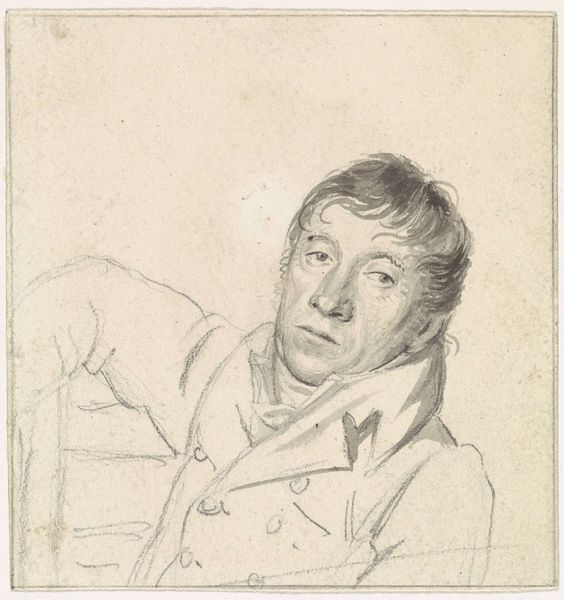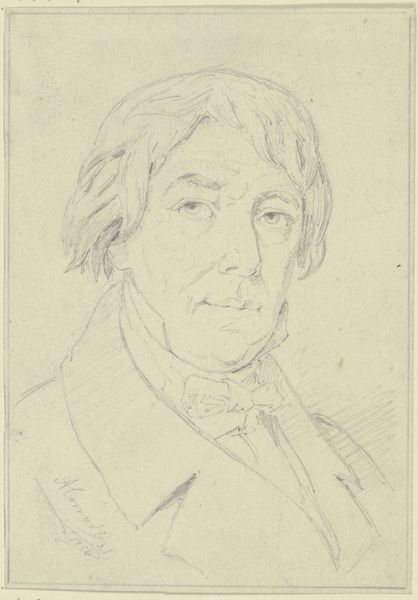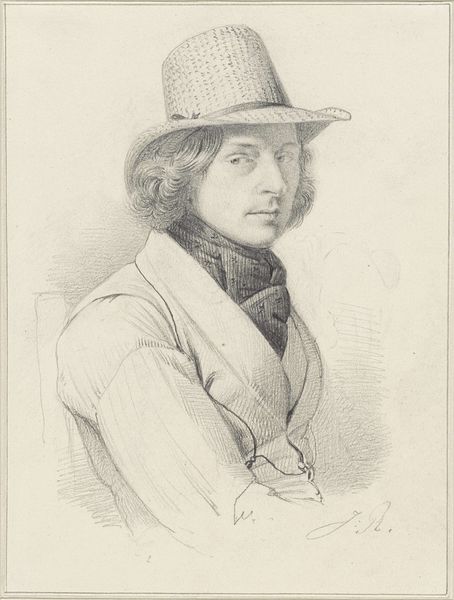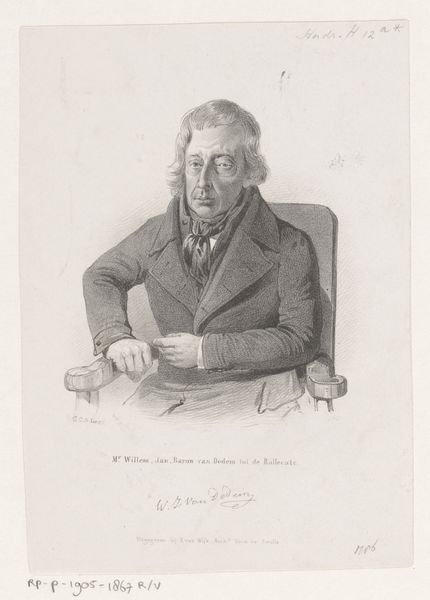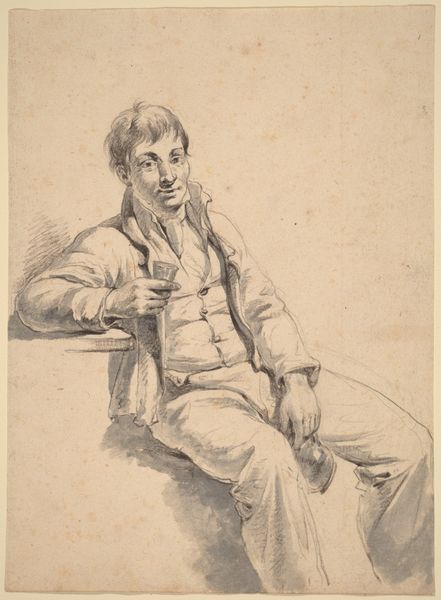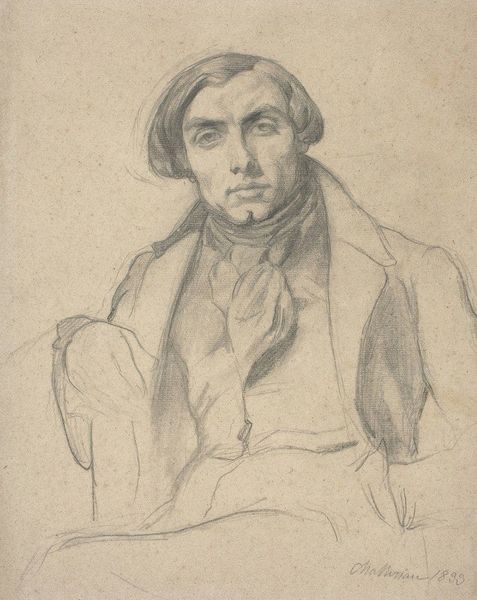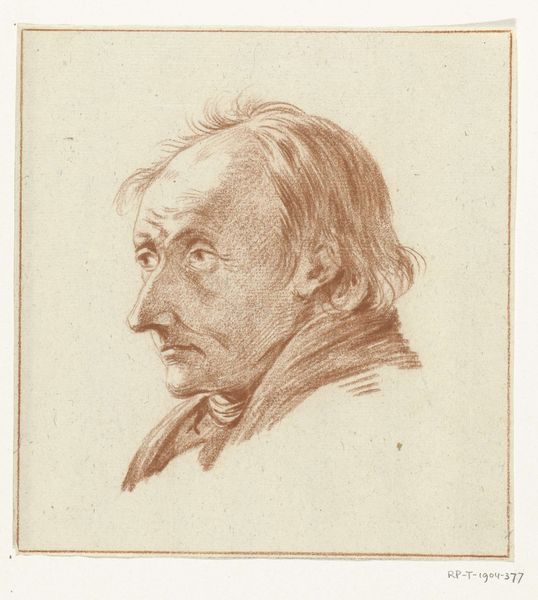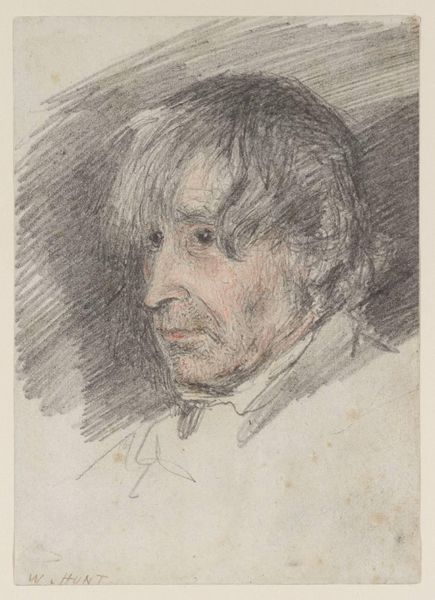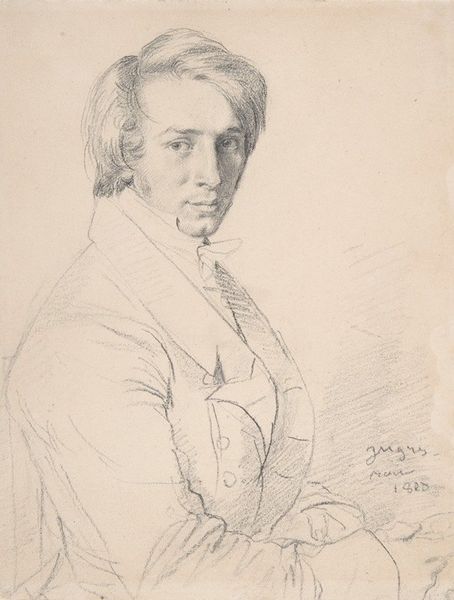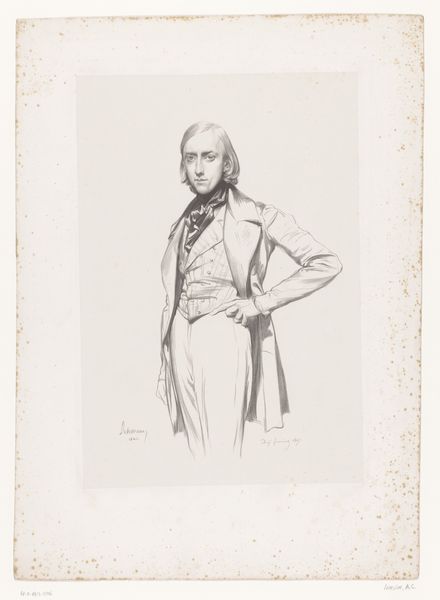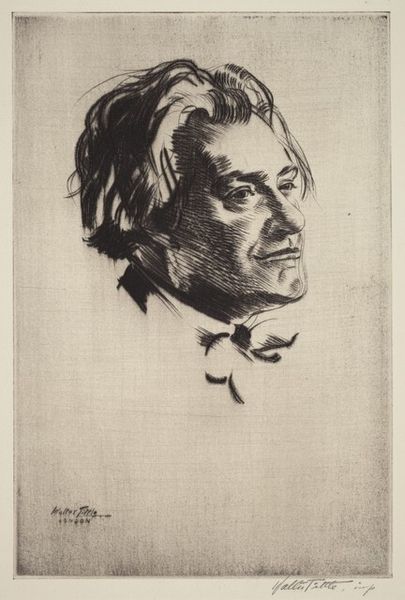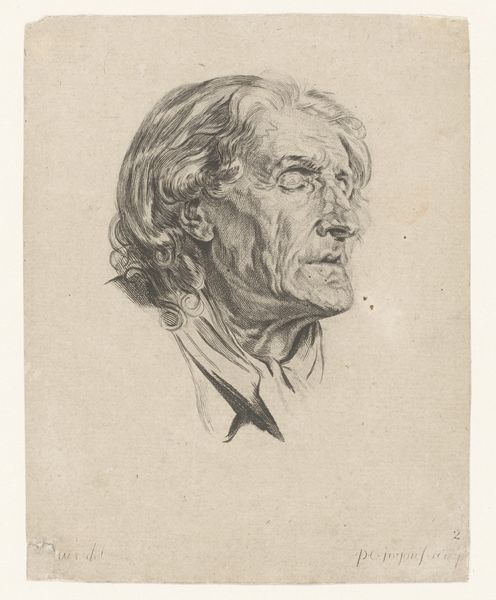
drawing, pencil
#
portrait
#
pencil drawn
#
drawing
#
neoclacissism
#
pencil sketch
#
pencil drawing
#
pencil
#
portrait drawing
Dimensions: height 234 mm, width 216 mm
Copyright: Rijks Museum: Open Domain
Curator: This is a drawing attributed to Nicolaas van der Worm, dating from sometime between 1780 and 1820. It's titled "Portret van Johannes Christiaan Janson," and rendered in pencil. What strikes you first about this piece? Editor: It has a fragile, almost haunted quality. The pale pencil lines create a sense of delicate transience. He seems like a ghost barely tethered to this world. Curator: Interesting observation. The lightness could be tied to Neoclassical ideals, echoing the emphasis on clarity and rational thought prevalent at the time. Think about how Enlightenment values promoted a more direct and accessible aesthetic in art. The image moves away from overly baroque ornamentation towards simple but defined shapes. Editor: Yes, the austerity of the lines contributes to the subject's serious, thoughtful expression. Although there are no striking attributes in the visual language of this man that tell of his time, he is simply sitting, perhaps resting from his civic responsibilities. What do we know of Janson himself? Is there anything significant about his persona that informs the meaning of this image? Curator: The details of Janson's life are scarce, but this portrait fits within a larger historical context of the Dutch Enlightenment. Such drawings documented individuals, particularly those involved in civic and intellectual life, so likely, this portrait served as a kind of public declaration of identity. The use of the pencil drawing suggests accessibility, perhaps even signaling a move away from grand aristocratic displays towards a more middle-class appreciation of portraiture. Editor: I'm captivated by his eyes. Despite the simplicity, they are imbued with a particular quality. I get the impression that Van der Worm has attempted to convey the psychological weight of the man through those windows into the soul, as people are sometimes heard to call eyes. This would indicate his desire to render a character study rather than just a representational exercise, making this less about Janson the individual and more about what Janson represents, which you suggest, of the civic values that have swept through society during the Enlightenment. Curator: Exactly. The focus shifts towards projecting an aura of civic virtue through simplicity and rationalism. While seemingly simple, the artwork demonstrates a complex negotiation of personal and public identity during the transition into modernity. Editor: A quiet testament to the power of unassuming lines to whisper volumes.
Comments
No comments
Be the first to comment and join the conversation on the ultimate creative platform.

